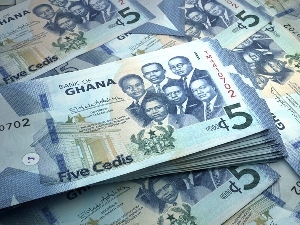Provisional estimates of Ghana's Gross Domestic Product (GDP) for last year indicate a growth rate of 3.7 per cent, which is 1.3 percentage points below the targeted growth rate of five per cent. According to Mr Yaw Osafo-Maafo, Minister of Finance, the growth rate was 0.7 percentage points lower than the performance achieved in the previous year.
Presenting the 2001 budget in Accra on Friday, he said the services sector performed strongly at 5.4 per cent during the year. It was followed by the industrial sector with a growth rate of 3.8 per cent while the agricultural sector recorded a less than expected growth rate of 2.1 per cent as against the 3.9 per cent achieved in 1999.
Mr Osafo-Maafo said as in previous years, the nation's economy continued to be dominated by the agricultural sector in 2000, accounting for 36.0 per cent of total real GDP.
He said at 1.1 per cent, the performance of the crops and livestock sub-sectors in the year 2000 was fairly disappointing compared to the 4.7 per cent achieved in 1999.
The fishing sub-sector recorded a decline in growth of 1.6 per cent in 2000 as compared with a growth rate of 1.0 per cent in 1999.
"It needs hardly be emphasised that the fishing sector has for several years achieved very disappointing results and will be targeted more vigorously for a reversal of the dismal performances," Mr Osafo-Maafo said.
He said cocoa as well as forestry and logging sub-sectors, however, recorded impressive growth rates of 6.2 per cent and 11.1 per cent respectively last year.
The corresponding growth rates for 1999 for the two sectors were negative 0.5 per cent and 6.8 per cent respectively.
Mr Osafo-Maafo said the industrial sector grew slightly weaker at 3.8 per cent as against the 4.9 per cent chalked in 1999, adding that all the four sub-sectors of mining and quarrying, manufacturing, electricity and water and construction recorded lower growth rates last year than in 1999.
Mr Osafo-Maafo said there was a strong upsurge in inflationary pressures in 2000 compared with the price development in 1999.
He said the end-of-period inflation for the 12 months ending December 2000 rose from 13.8 per cent to reach 40.5 per cent.
The rate of food price inflation that characterised the last nine months of 1999 continued into the first seven months of 2000 until August when the rate accelerated to 10.9 per cent, ending the year at 24.3 per cent.
"In contrast to the relatively low rate of food price inflation recorded in 2000, the rate of non-food price inflation rose sharply from 20.8 in December 1999 to 54.2 per cent by the end of 2000, an increase of 33.4 percentage points."
Mr Osafo-Maafo said the current account balance, excluding official transfers, recorded a deficit of 605 million dollars compared with a deficit of 1,074 million dollars in 1999.
"The improvement in the current account resulted from developments in the trade account as well as larger inflows of private unrequited transfers which increased from 472 million dollars to 495.7 million dollars in the year.
General News of Saturday, 10 March 2001
Source: GNA












